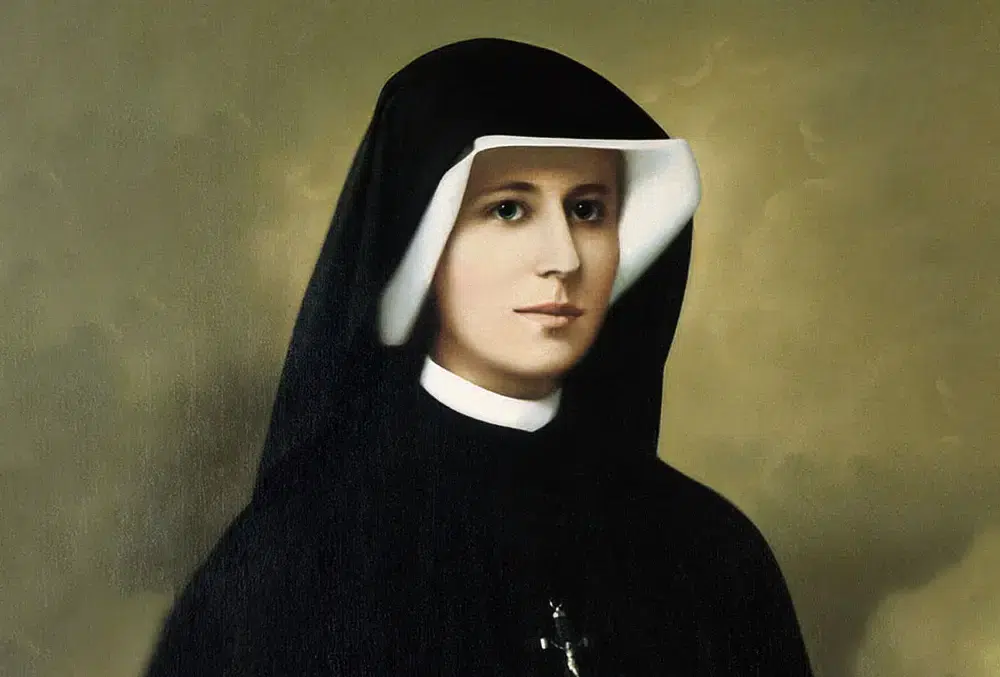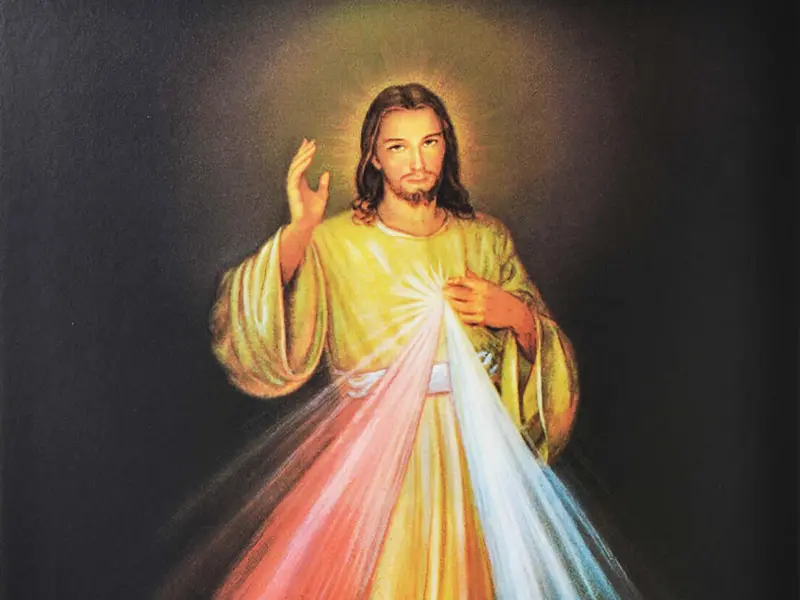
In the history of the Catholic Church, few twentieth century figures have had such a profound and universal impact as saint Faustina Kowalska. This Polish nun, Apostle of the Divine Mercy, canonized in the year 2000
He received his message directly from Jesus Christ through a series of mystical revelations. His confessor obliged him to write down all the revelations in what is known as the Diary of Divine Mercy.
Helena Kowalska was born in 1905 in the village of Głogowiec, Poland, into a poor and pious peasant family. From a very young age, she felt a strong inclination towards the spiritual life. At the age of seven, she already sensed in her soul the call to the consecrated life.
Her parents were initially opposed due to the family's precarious economic situation. During her adolescence, she worked as a servant to help her family and save for her dowry, a common requirement at the time for entering a convent.
Despite the difficulties, the call of God was insistent. At the age of 18, faced with the refusal of her parents, she decided to give herself to the vagaries of life in order to silence the call of Grace. Precisely with her sister Josephine, when everyone was enjoying themselves and having a good time, she was not capable, she suffered and felt great sadness.
This episode was decisive for her vocation. She had a vision of the suffering Jesus who asked her: "Helena, my daughter, how long will you make me suffer, how long will you deceive me? This moment marked a point of no return.
She abandoned everything and, following this divine impulse, went to Warsaw to look for a convent that would accept her. After being rejected by several congregations, she was finally admitted into the Congregation of the Sisters of Our Lady of Mercy in 1925, where she adopted the name of Sister Maria Faustina of the Blessed Sacrament.

In 1928 she took her vows as a nun and lived very few years as such, since she died on October 5, 1938, at the age of 33, of which 13 years were spent in the convent. The life of Saint Faustina Kowalska like nun was apparently ordinary and simple. She performed with humility and diligence the simplest tasks: cook, gardener, doorkeeper, for she was warned that she would enter there as a lay sister and that, because of her low level of schooling, she might not reach higher levels in the order.
However, in the secret of her cell and of her heart, a mystical life of unprecedented depth was developing. Jesus appeared to her and entrusted her with a mission: to be the apostle and secretary of His Divine Mercy.
The core of her mission is found in her Diary, which her confessor obliged her to write with the simplicity of a person who barely received any academic training because of her extreme poverty. The manuscript of more than 600 pages meticulously recorded Jesus' words, visions and spiritual experiences.
In these revelations, Christ asked him to paint an image of Him as He appeared to him, with two rays emanating from His heart, one red and the other pale, symbolizing the blood and water shed on the Cross. Under the image was to be the inscription: "Jesus, I trust in You". Jesus told her that he wanted the image of the Divine Mercy to be "solemnly blessed on the first Sunday after Easter; that Sunday will be the feast of mercy".
This image, known today as the Divine Mercy, is one of the most recognized Christian icons in the world. Jesus also taught Sister Faustina the Chaplet of Divine Mercy, a prayer to implore mercy for the whole world, and asked her to establish the first Sunday after Easter as the Feast of Mercy.
This devotion was not a simple addition to popular piety, but an urgent reminder to a world mired in conflict and despair that God's greatest attribute is His infinite mercy.
The service life humble of saint Faustina Kowalska was not limited to her prophetic mission. Her spirituality was deeply rooted in sacrifice and self-offering for the salvation of souls. She offered her sufferings, both physical-she suffered from tuberculosis for years-and spiritual, in union with the Passion of Christ. She understood that service to others and love of neighbor were the most authentic manifestation of devotion to Divine Mercy.
His obedience to his superiors and his spiritual director, Blessed Michael Sopoćko, was exemplary. Despite the doubts, misunderstandings and difficulties he encountered, even within his own congregation, he persevered with unwavering trust in the will of God. It was precisely his confessor, Sopoćko, who indicated to him that he should write a Diary with all the revelations that Jesus was making to him.
His life reflects how God chooses the humble to carry out his greatest works, demonstrating that holiness does not lie in doing extraordinary things, but in doing ordinary things with extraordinary love.
Faustina told Sopoćko about the Divine Mercy image, and in January 1934, he introduced her to the artist Eugene Kazimierowski, also a professor at the same university, where her confessor was teaching Pastoral Theology.
The Journal of saint Faustina Kowalska has been translated into dozens of languages and has guided countless people into a deeper relationship with God. Devotion to the Divine MercyThe company was decisively driven by St. John Paul II -who called her the great apostle of Mercy in our times, has spread throughout the Church. Today, its message resounds in a world wounded by division and sin, God's Mercy is the only refuge and the only hope.
On April 18, 1993, the Feast of Divine Mercy (second Sunday of Easter), John Paul II declared Sister Faustina Blessed in front of a crowd of Divine Mercy devotees in St. Peter's Square in Rome.
Maria Faustina Kowalska was canonized on April 30, 2000.The Holy Father presided over the canonization ceremony, the second Sunday of Easter, which the Catholic Church also calls Divine Mercy Sunday. The Holy Father presided over the canonization ceremony before a large crowd of devotees.
The life of this humble nun Polish teaches us that a service lifelived in faith and trust, can transform the world. St. Faustina reminds us that, no matter how great our weaknesses or sins, God's loving heart is always open to welcome us with his infinite mercy.